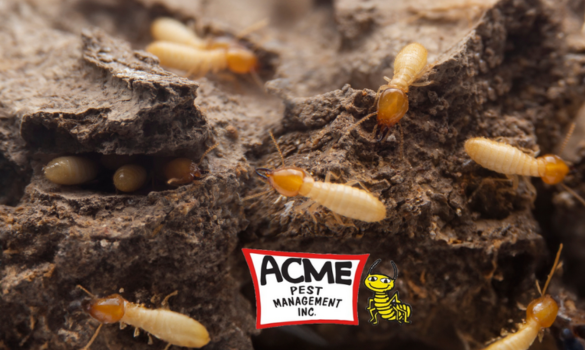Termites

How much do you know about termites?
Most people would probably say, “not a lot.” As a pest control company, we find them fascinating and want to share 10 really cool facts about these pests in observance of Termite Awareness Week:
- Termite Species: There are over 2,000 species of termites worldwide, but only a few are known to be pests that affect homes. The most common species in the U.S. are subterranean termites, dry wood termites, and damp wood termites.
- Termites Can Cause Severe Structural Damage: Termites can chew through wood, flooring, and even wallpaper, leading to serious structural damage. In fact, termites are responsible for an estimated $5 billion in property damage in the U.S. each year.
- Termites Are Social Insects: Termites live in highly structured colonies with a caste system. Each colony has three primary types of termites: workers (who feed and care for the colony), soldiers (who defend the colony), and reproductives (which include the king and queen responsible for breeding).
- Termite Queens Are Long-Lived: The termite queen is responsible for laying thousands of eggs every day. Some termite queens can live for over a decade and continue to produce eggs, sustaining the colony for years.
- Termite Swarming Season: In the spring, especially after rain, many termite species swarm to start new colonies. This is when you may notice a sudden increase in flying termites. Swarming termites are a key indicator of an existing colony nearby.
- Termite “Mud” Is a Sign of Active Infestation: Mud tubes that termites build along walls, foundations, and other surfaces are a good indicator of active infestations. These tubes protect termites from the open air while they travel to find food.
- Termites Can Eat Day and Night: Termites are constantly eating and feeding on wood, and they never stop. This means damage can occur at all hours of the day and night, often unnoticed until significant damage has been done.
- Termites Help Decompose Wood: While termites can cause damage to homes, they also play an important role in nature. They help break down and recycle dead wood in forests, contributing to the ecosystem.
- Termites Are Hard to Detect: Because they often remain hidden inside walls, ceilings, or foundations, termites can be difficult to detect until significant damage occurs. Regular inspections are critical for catching infestations early.
- Temperature Affects Termite Activity: Termite activity increases with warmer temperatures. This is why termite infestations are more common in warmer climates and during the spring and summer months.
